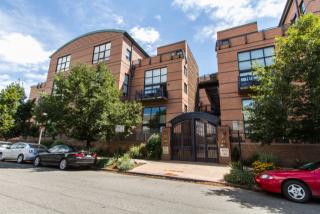The initial settlement in and near the Civic Center area dates back to 1858, when bands of gold prospectors from Kansas organized a company town along Cherry Creek.
The first subdivision recorded in this area dates back to 1885. The number of residential, commercial and public buildings grew steadily between 1860 and 1920, influenced primarily by construction of the State Capitol, completed in 1904.
In 1902, the Denver Municipal Art Commission first studied the concept of creating a civic center which would centralize the city’s great municipal and cultural buildings and monuments in an inspiring park. In 1905, the commission recommended the adoption of a city plan which would include a civic center “emphasizing accessibility, utility, harmony, and celebration.” The following year, noted planner Charles Mulford Robinson prepared a park plan which included a proposed civic center, as well as a boulevard linking Speer Boulevard with parkways connecting various city parks. Robinson also suggested typical City Beautiful improvements such as the creation of playgrounds, hiring of a city forester, and implementation of sign control. Though actualization of Robinson’s plan was defeated by a vote in 1906, Speer continued to favor the concept of a civic center and plan for its realization.
Sculptor Frederick MacMonnies, who had been commissioned to design the Pioneer Monument, suggested revisions to the civic center plan, including the location eventually chosen; his work was further refined by the Art Commission. Although a reform coalition replaced Speer in 1912, the plan continued to advance as the next administration purchased the necessary land and began clearing the site. Frederick Law Olmstead and Alfred Brunner, nationally known planners, made a detailed study of the proposed site. In 1916, Speer returned to office and worked with Chicago architect and planner Edward H. Bennett to complete the Civic Center design.
As constructed, Civic Center featured the State Capitol as the eastern anchor of a broad central park. Pioneer Monument was completed in 1911 at the intersection of Broadway, Cheyenne Place, and West Colfax Avenue. The Colorado Museum Building erected in 1915 was followed by the State Office Building a year later. In 1919, the Greek Theater and Colonnade of Civic Benefactors was completed. The Voorhies Memorial Gateway was placed opposite the Greek Theater in 1921, a memorial to John H.P. Voorhies, a Denver pioneer. Other buildings followed, including the City and County Building (1932), the State Capitol Annex (1939), the Denver Art Museum (1971). The development of Civic Center and the expanded park and parkway system strengthened Denver’s position as a tourist destination by offering significant amenities to attract visitors.
There are 15 historic structures within the Civic Center area that are listed on the National Register of Historic Places. One of the oldest structures is the Byers-Evans house, built in 1880 and located at 13th Avenue and Bannock Street.



